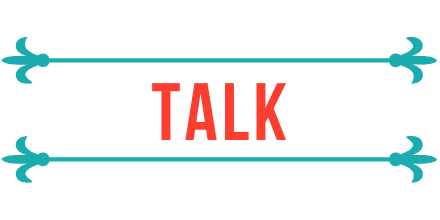Tips on migrating from Flask to FastAPI and vice-versa
Are you migrating from Flask to FastAPI and facing problems? In this blog post, you will learn about some of the issues that you may encounter when migrating a web application from Flask to FastAPI, as well as how to solve them.
The web app that started it all
As a developer advocate at Auth0, I build sample applications that can be used to showcase our product. For example, I used a sample app built with Flask, Jinja, and Auth0 to build a demo for sponsored booths. This demo application showcases how Flask and Auth0 can be used together to develop web applications.
This app is a typical web app, consisting of a backend built in Flask, a frontend made with Jinja templates, and some CSS. It is secured with Auth0 to simplify the authentication and authorization processes.
While writing some code to answer a question from a developer a thought popped into my mind: “Since Auth0 can be used with any framework, why not create a version of the sample app using FastAPI in the backend instead of Flask?”
Thinking of the work that I do, I could use the new version built with FastAPI to write a guide that would help developers understand how to protect their applications built in FastAPI using Auth0. So I decided to use the sample built in Flask and migrate things over to a FastAPI-powered app. To make things easier on me, my plan was:
- Reuse as much as possible of the original app built with Flask:
- Copy templates and styling as well as any JavaScript.
- Adjust anything necessary for the Flask code to work the “FastAPI way”.
That was a simple plan. Only two steps. “How hard could it be?” I know, I know, famous last words. So once I started migrating things over, I realized there were a few things that I would need to adjust for the app in FastAPI to function properly.
Below you can see what you’ll also need to adjust if you have a similar application you want to migrate over from Flask to FastAPI.
Disclaimer: Since the authentication guide in FastAPI is not public yet, I have created two sample applications with all the code shown in the examples of this blog post. If you are interested in reviewing the code, both applications are available on GitHub. You can follow the links below:
Templates
Both Flask and FastAPI support templating using Jinja, but there are a few differences.
Flask will automatically identify templates in your project so you can use the render_template method and Flask will look for the template in your project folder. You can even have two formats: either as a module where the template is on your root folder or as a package where the template lives inside your application folder.
As long as you use a templates/ folder Flask will automatically pick up on it. This will only vary if you are using Blueprints because you will need to pass the path for the templates to the blueprint you create.
FastAPI on the other hand, not only you do have to make sure to install Jinja2 on your environment, but you also need to tell FastAPI where to find the templates. With that said you can put the templates folder anywhere, but you’ll need to instantiate a templates variable for FastAPI to pick up on it like so:
from fastapi.templating import Jinja2Templates
templates = Jinja2Templates(directory="templates")
After that, you can use that variable to render the template for a given endpoint like this:
@app.get("/")
def home(request: Request):
"""
Home endpoint
"""
return templates.TemplateResponse("home.html")
Jinja Filters
Filters in Jinja serve as a way to modify variables. In this sample app, we created a filter to_pretty_json to “pretty print” a JSON object into the /profile endpoint. Even though the function is the same on both projects, the way to pass it along to the templates is a little bit different in each framework.
Note: you are going to notice that both frameworks will work similarly but the property names will be different.
Since Flask automatically picks up the templates, the Flask instance has a property called jinja_env that corresponds to the Jinja environment and that you can edit using the filters dictionary to register new filter like so:
app.jinja_env.filters['to_pretty_json'] = to_pretty_json
You can also use the template filter decorator.
Since in FastAPI you had to instantiate the templates variable, you’ll also use that variable to pass along the new filter. The templates variable has the env property allowing you to access the filters dictionary as you can see below:
templates.env.filters['to_pretty_json'] = to_pretty_json
Static files folder
Much like templates, both Flask and FastAPI, allow you to bundle the static files (CSS, JavaScript, and images) under the same folder, but once again there are a few differences.
Flask supports static files out of the gate with no configuration needed, you only need to add the static/ folder to your project, and that’s it, you don’t need any extra configuration to access static files from your templates.
For FastAPI, much like the template folder, you need to set the location of the static file by using the mount property, which is also known as “mounting” the static files, and the StaticFiles class to instantiate the directory.
from fastapi.staticfiles import StaticFiles
app = FastAPI()
app.mount(
"/static",
StaticFiles(directory="static"),
name="static"
)
Note that this way of creating the static files folder within the app creates an independent application and won’t be picked up by the OpenAPI or the docs but you’ll still be able to use things like the url_for function on your templates.
Using url_for function on the templates
Both templates on Flask and FastAPI will allow you to programmatically define URLs for files and endpoints using the url_for function, but as you can expect the parameters differ on each framework.
For example, in Flask, to add the style sheet on your base.html, you pass along the folder name static followed by the parameter named filename containing the name of your CSS file.
<link href="{{ url_for('static', filename='style.css') }}" rel="stylesheet" />
For FastAPI the functionality of the url_for function will be the same, but the parameter for the filename is called path:
<link href="{{ url_for('static', path='style.css') }}" rel="stylesheet" />
Sessions
For web applications, you usually have a way to manage sessions. Below you can see how you can interact with a session in each framework. The example will show how to clear a session when logging out.
In Flask, you can access the session from the session object that can be imported from the flask module as you can see below:
from flask import session
# ... blueprint definition
@webapp_bp.route("clear-session-example")
def session_clearing():
"""
example on how to clear a session, often used in logout endpoints
"""
session.clear()
# ... rest of your logic
Meanwhile, in FastAPI the session is part of the Request object and it is rewritable, so you can for example add the session from an identity provider for example… You can access the session by passing the request as part of the endpoint function, and then using it request.session, like so:
from fastapi import Request
# ... router definition
@webapp_router.get("/profile")
def profile(request: Request):
request.session = {"user": {"name": "sam",},}
# ... rest of your profile endpoint logic
Modular applications: Blueprint and APIRouter
For more complex applications, which usually include multiple modules inside of an app, you’ll need to use a router so you can have some separation between responsibilities. For this, you will have a Blueprint in Flask and an APIRouter in FastAPI.
After creating the Blueprint or APIRouter you’ll need to register them with your app. Here’s what that looks like for both frameworks.
The Blueprint will need some more configuration like the name of that blueprint (’webapp’) as well as the import name (__name__) and any other configuration necessary, in this example, we passed along the template folder for the webapp:
from flask import Flask, Blueprint
webapp_bp = Blueprint(
'webapp', __name__, template_folder="templates"
)
app = Flask(__name__)
Once the blueprint is created you can register it to your app. This helps make available any views/routes within your blueprint for your application. The registration occurs by calling the register_blueprint method from your app, and passing along the blueprint like so:
from flask import Flask
app = Flask(__name__)
app.register_blueprint(webapp_bp, url_prefix='/')
For FastAPI the APIRouter will function similarly to the Blueprint in Flask, the difference is that you don’t need to pass any names, take a look:
from fastapi import APIRouter
webapp_router = APIRouter()
Then to register the router you can use the method include_router from your FastAPI app, and pass along the webapp_router like this:
from fastapi import FastAPI
app = FastAPI()
app.include_router(webapp_router)
Using url_for in the endpoints
Other than in templates, you can use the url_for in an endpoint to programmatically define the path for a given endpoint/route.
For using url_for in Flask you gotta import the function from the flask library and then pass the name of the endpoint. If your endpoint is in another module, remember to pass along the name of that module as well like so:
from flask import redirect, url_for
# ... blueprint definition
@webapp_bp.route("/redirect-example")
def redirect_example():
return redirect(url_for("webapp.home"))
Meanwhile, in FastAPI the url_for is a method and comes from the Request class. You need to pass along the endpoint name, if that endpoint is part of your app, even if it is in another module, everything will work from there and there’s no need to pass the module name as well.
from fastapi import Request
from fastapi.responses import RedirectResponse
# ... router definition
@webapp_router.get("/redirect-example", dependencies=[Depends(ProtectedEndpoint)])
def redirect_example(request: Request):
return RedirectResponse(url=request.url_for("home"))
Recap
Migrating frameworks in an application can be a daunting task especially if you don’t know where things might go wrong after copying and pasting code. But if you know where things will differ the migration will go much more smoothly.
Here’s a short version of the things to keep an eye out for if you are going to migrate from Flask to FastAPI and vice-versa:
- Flask will pick up templates automatically, but FastAPI needs to be told where to find the templates using the
Jinja2Templatesclass and passing along the templates directory. - Flask will use the
render_templatefunction to render pages, whereas FastAPI will useTemplateResponsewhich comes fromJinja2Templatesclass. - To create new filters in Flask you use the
jinja_envproperty, FastAPI will use theenvproperty. - Flask will pick up the static folder automatically, for FastAPI you need to “mount” the folder and use the
StaticFilesclass. - Sessions are handled differently, for Flask there’s a
sessionobject, for FastAPI thesessionobject is part of theRequestclass. - For more complex applications you use
Blueprintin Flask to define new routes whereas in FastAPI you’ll have a similar structure calledAPIRouter. Remember to register your blueprint or your router with your app. - Finally, remember to use the
url_forfunction with the correct parameterfilenamefor Flask andpathfor FastAPI, and that in your endpointsurl_forexists as a standalone function in Flask whereas it is a method from theRequestclass in FastAPI.
In case you want to see apps in each framework and compare the differences for yourself here are the repositories on GitHub:
Finally, if you went through a similar process what other problems did you face and how did you solve them? I’d love to know more about your experience, send me a message on any of my social profiles.



